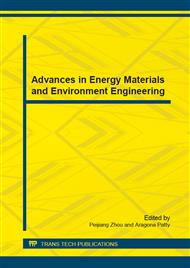p.290
p.294
p.298
p.302
p.306
p.310
p.314
p.323
p.334
Difference of Morphological Structure and Characteristics of Physiology and Biochemistry between Two Types of Alfalfa Callus
Abstract:
In order to know the key factors of callus development on single cell clone, characteristics of physiology and biochemistry and morphological structure on two types of Alfalfa callus was studied. The results showed that the cell membrane permeability and malondialdehyde content was same on two types of callus; but, their soluble sugar content and peroxidase activity in cells was larger different, the soluble sugar content: soft callus > huge callus, and soft callus was 2.09 times of huge callus; peroxidase activity: huge callus > soft callus, and huge callus was 1.35 times of soft callus. Huge callus cells were larger, loosely arranged, cell vacuolization and cytoplasm was thinner than soft callus. However, soft callus cells were smaller, loosely arranged, cell vacuoles was smaller and cytoplasm was thicker than hug callus. Huge cells had the same membrane metabolic with soft cells, but soft cells had higher sugar accumulation than huge cells, and soft cells metabolism are vigorous, while huge cells are more aging.
Info:
Periodical:
Pages:
306-309
Citation:
Online since:
December 2014
Authors:
Price:
Сopyright:
© 2015 Trans Tech Publications Ltd. All Rights Reserved
Share:
Citation:


